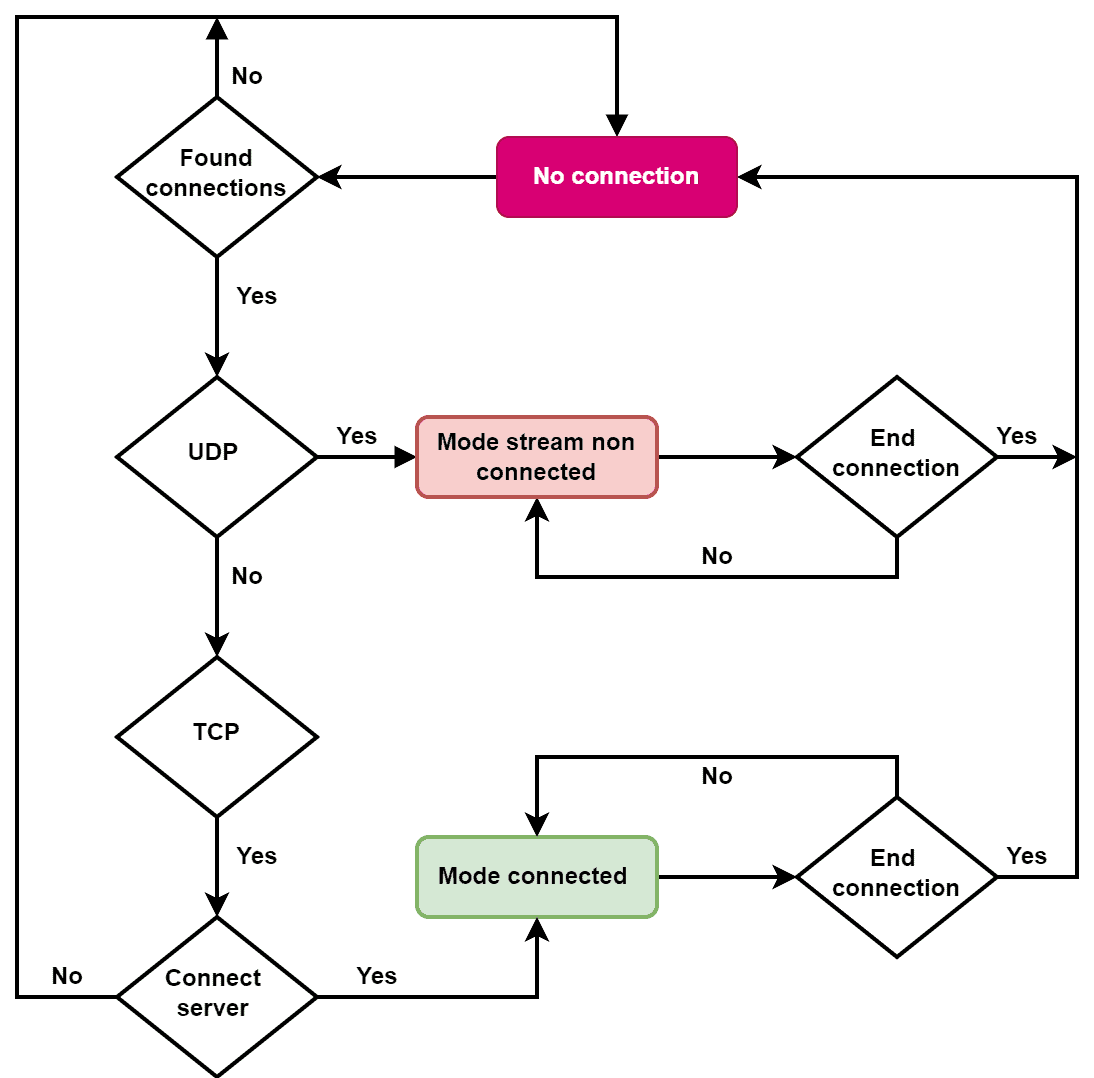1. 概述
在构建分布式系统时,进程间的网络通信是基础中的基础。本文将介绍两种常见的通信方式:Socket 和 RPC(Remote Procedure Call),并深入对比它们的工作原理、使用场景及核心差异。
本文的目标不是泛泛而谈,而是为有经验的开发者提供一个快速回顾和参考的资料。如果你曾经写过网络通信模块,但对 Socket 和 RPC 的区别仍感模糊,那么这篇文章将帮你理清思路。
2. Socket
Socket 是用于网络通信的软件结构,它允许两个进程在不同机器上进行数据交换。
2.1 基本概念
Socket 是 IP 地址和端口号的组合:
- IP 地址:标识网络中的某一台机器
- 端口号:标识该机器上的某个进程
Socket 通常用于实现客户端-服务器模型(Client-Server Model),是构建分布式应用的基础。通信双方各持有一个 Socket,一个作为客户端,一个作为服务端。
Socket 通信主要使用两种协议:
- TCP(Transmission Control Protocol):面向连接,可靠传输,适用于要求数据完整性的场景
- UDP(User Datagram Protocol):无连接,传输快但不可靠,适合对实时性要求高的场景
2.2 工作流程
Socket 通信流程如下图所示(以 TCP 为例):

TCP 通信流程示意图如下:

TCP 模式:
- 服务端监听端口
- 客户端发起连接请求
- 服务端接受连接
- 双方开始数据传输
- 传输完毕后关闭连接
UDP 模式:
- 客户端直接发送数据报
- 服务端接收数据报并处理
- 无需建立连接,也无确认机制
2.3 使用场景
| 应用类型 | 协议 | 说明 |
|---|---|---|
| 视频会议(如 Zoom、Discord) | UDP | 实时性强,丢包可容忍 |
| 在线游戏 | UDP | 快速响应优先 |
| VoIP(如 WhatsApp、Viber) | UDP | 实时语音/视频传输 |
| DNS 查询 | UDP | 快速查找优先 |
| FTP 文件传输 | TCP | 数据完整性要求高 |
| HTTP 通信 | TCP | 保证请求响应完整 |
| 文字聊天(如 WhatsApp、Facebook) | TCP | 信息不能丢 |
2.4 示例代码(Java TCP Socket)
// 服务端代码
ServerSocket serverSocket = new ServerSocket(8888);
Socket socket = serverSocket.accept();
BufferedReader in = new BufferedReader(new InputStreamReader(socket.getInputStream()));
System.out.println("Received: " + in.readLine());
// 客户端代码
Socket socket = new Socket("localhost", 8888);
PrintWriter out = new PrintWriter(socket.getOutputStream(), true);
out.println("Hello Server");
3. RPC(Remote Procedure Call)
RPC 是一种高层通信协议,允许一个程序像调用本地函数一样调用远程服务器上的函数。
它的核心思想是“远程调用本地化”,开发者无需关心底层网络细节,只需像调用本地方法一样进行远程调用即可。
3.1 工作流程
RPC 调用过程如下:
- 客户端调用本地“存根(Stub)”方法
- Stub 将参数打包为消息,发送给远程服务器
- 服务器接收到请求后,由服务器 Stub 解包参数
- 执行真正的远程函数
- 函数执行结果返回给 Stub,再封装成消息返回客户端
- 客户端 Stub 解包结果,返回给调用者
整个过程对开发者透明,如下图所示:

3.2 使用场景
| 应用 | 说明 |
|---|---|
| RFS(Remote File Sharing) | 用于远程数据库访问 |
| NFS(Network File System) | 基于 RPC 的分布式文件系统 |
| Windows Communication Foundation (WCF) | .NET 中的 RPC 实现 |
| Google Web Toolkit (GWT) | 使用 RPC 与服务器通信 |
3.3 示例代码(Java RMI)
// 定义远程接口
public interface Hello extends Remote {
String sayHello() throws RemoteException;
}
// 服务端实现
public class HelloImpl extends UnicastRemoteObject implements Hello {
public HelloImpl() throws RemoteException {
super();
}
public String sayHello() {
return "Hello from server";
}
}
// 客户端调用
Hello hello = (Hello) Naming.lookup("rmi://localhost/Hello");
System.out.println(hello.sayHello());
4. Socket 与 RPC 的核心差异
| 对比项 | Socket | RPC |
|---|---|---|
| 层次 | 底层通信结构 | 高层通信协议 |
| 实现方式 | 独立存在,可单独使用 | 依赖于 Socket 实现 |
| 配置复杂度 | 需手动设置每个 Socket | 无需手动配置 |
| 代码复杂度 | 较复杂,需处理底层细节 | 简洁,调用方式接近本地方法 |
| 性能 | 更高效,适合高性能场景 | 有一定性能损耗 |
| 网络带宽 | 使用较少 | 使用较多 |
| 协议支持 | 仅支持 TCP/UDP | 可支持多种协议(HTTP、gRPC 等) |
| 开发难度 | 较难,需处理连接、数据格式等 | 更易用,封装良好 |
| 典型场景 | 实时性强、低延迟场景(游戏、音视频) | 服务间通信、微服务调用 |
5. 总结
Socket 和 RPC 是网络通信中两种不同的实现方式:
- ✅ Socket 是底层通信结构,适用于对性能和控制力要求高的场景
- ✅ RPC 是高层通信协议,适用于服务间调用、开发效率优先的场景
选择使用哪一种方式,取决于你的业务需求和系统架构。比如:
- 如果你在开发一个实时音视频应用,建议使用 UDP Socket
- 如果你在构建微服务系统,推荐使用 gRPC、Dubbo 等 RPC 框架
理解它们的差异,有助于你在设计分布式系统时做出更合理的技术选型。希望这篇文章能成为你日后参考的“速查手册”。